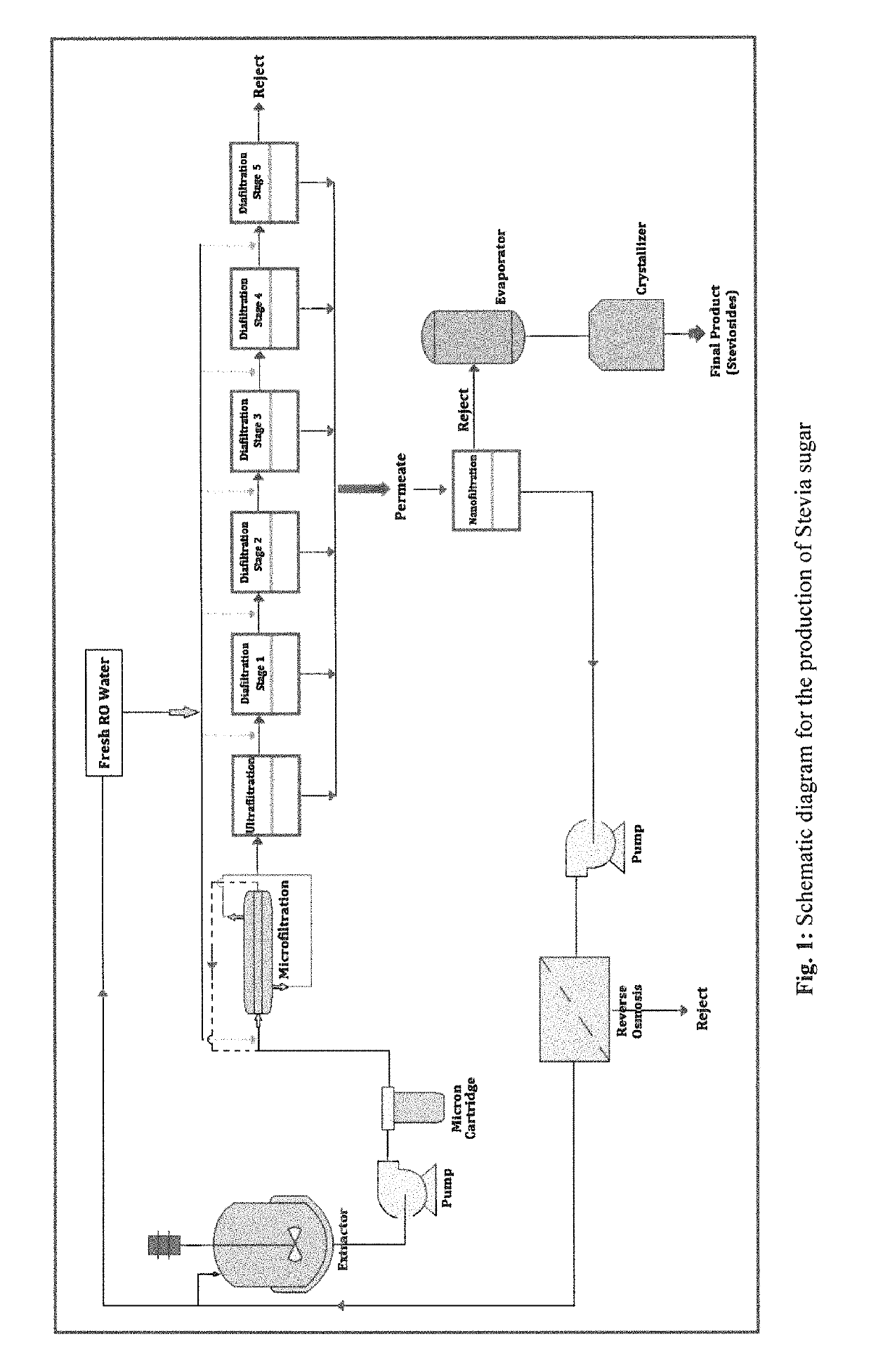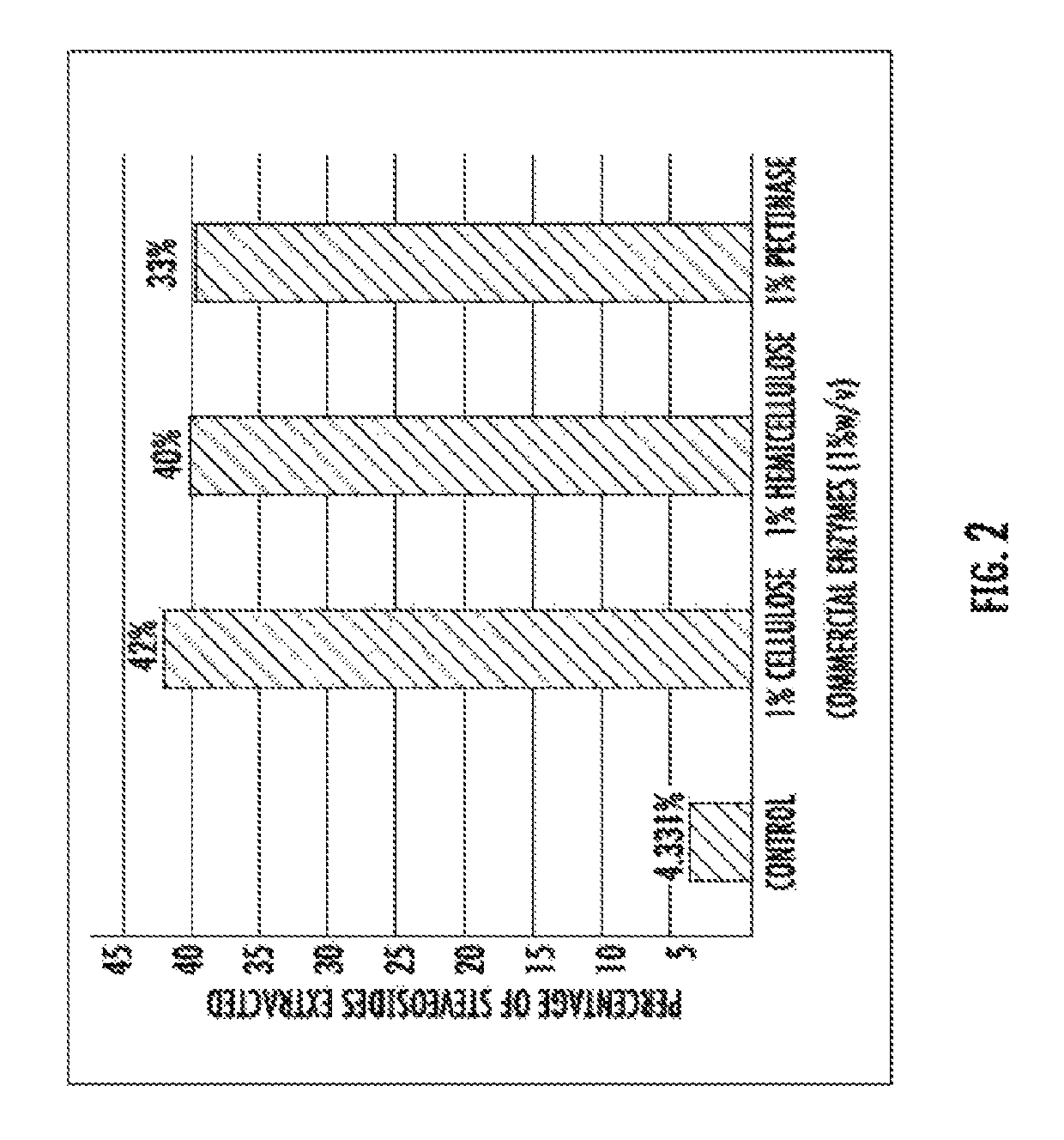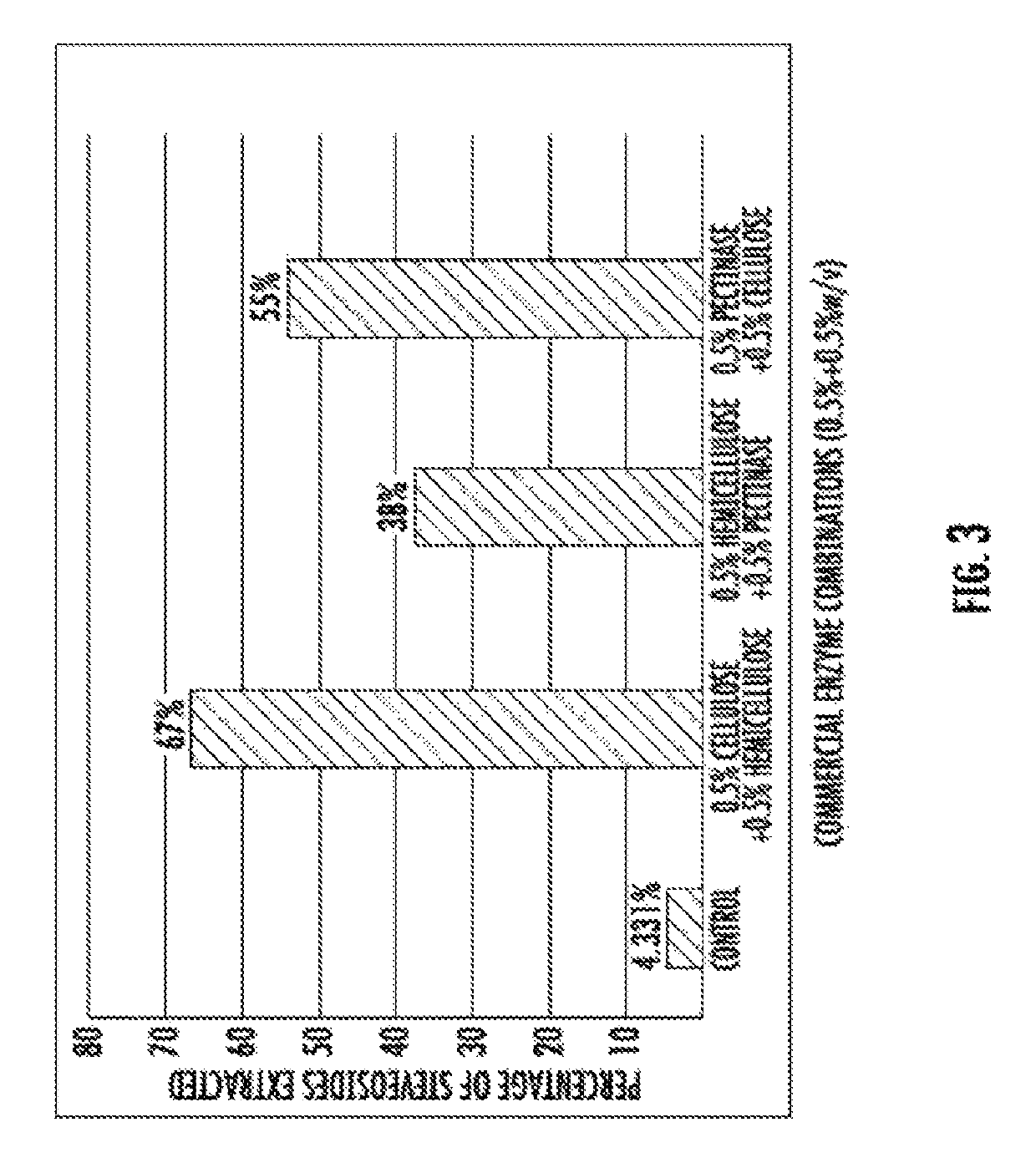Enzyme-assisted extraction of steviol glycosides from the leaves of Stevia rebaudiana Bertoni
a technology of steviol glycosides and enzymes, which is applied in the field of enzyme-assisted extraction of steviol glycosides from the leaves of i>stevia rebaudiana /i>bertoni, can solve the problems of limited human consumption, limited application in food and pharmaceutical industries, and many nutritional deficiencies
- Summary
- Abstract
- Description
- Claims
- Application Information
AI Technical Summary
Benefits of technology
Problems solved by technology
Method used
Image
Examples
examples
[0054]The following examples are given by way of illustration and therefore should not be construed to limit the scope of the present invention.
example 1
Extraction of Stevioside from Stevia Plant
[0064]The extraction of steviosides from the Stevia rebaudiana leaves was carried out using different enzymes: cellulase (10 U / mg), hemicellulase (0.3-3 U / mg) and pectinase (8-12 U / mg).
[0065]To 100 gm of Stevia leaves in 600 ml of acetate buffer (pH 4.6), different concentrations of the enzymes: cellulase (60,000 U), hemicellulase (18,000 U) and pectinase (48,000 U) were added and incubated for 4 hours. The reaction was terminated by heating in boiling water for 30 minutes, followed by isolation of the steviosides present in the medium through continuous membrane filtration for clarification and purification to isolate pure steviosides as shown in FIG. 2.
example 2
Extraction of Stevioside from Stevia Plant
[0066]Synergism between two enzymes plays a major role in enhancing the extraction of natural products, therefore in this study it was planned to explore the effective isolation of steviosides using accessory enzymes. (a) Li, J. Bioresour. Tech. 155:258-265 (2014), (b) Kostylev, M et al., Biofuels 3:61-70 (2012), (c) Puri, M et al., Trends Biotechnol. 30: 37-44 (2012).
[0067]The extraction of steviosides from the Stevia leaves was carried out using a combination of two different enzymes: cellulase 10 U / mg, hemicellulase 0.3-3 U / mg and pectinase 8-12 U / mg.
[0068]To the reaction medium of 600 ml of acetate buffer (pH 4.6), 100 gm of stevia leaves were added. To this, different concentrations of enzymes: cellulase (30,000 U)+hemicellulase (9,000 U), hemicellulase (9,000 U)+pectinase (24,000 U), pectinase (24,000 U)+cellulase (30,000 U), were added. The reaction medium was incubated for 4 hours. The reaction was assessed at 30 minute intervals. It...
PUM
 Login to View More
Login to View More Abstract
Description
Claims
Application Information
 Login to View More
Login to View More - R&D
- Intellectual Property
- Life Sciences
- Materials
- Tech Scout
- Unparalleled Data Quality
- Higher Quality Content
- 60% Fewer Hallucinations
Browse by: Latest US Patents, China's latest patents, Technical Efficacy Thesaurus, Application Domain, Technology Topic, Popular Technical Reports.
© 2025 PatSnap. All rights reserved.Legal|Privacy policy|Modern Slavery Act Transparency Statement|Sitemap|About US| Contact US: help@patsnap.com



